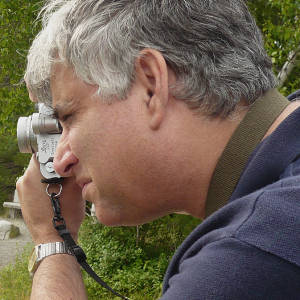Details, details. Lumix M4/3 14mm.
My workshop is small, and I'm starting to run out of room for all the sections of the cabinet I'm creating. I plopped the cypress panel on top of the cabinet, and serendipity juxtaposed these two details.
The dovetailed walnut section is the top front rail of the cabinet. Although it will be covered by the top and never seen, it is traditional to lap dovetail the front into the side rails. This determines the width of the carcass, and therefore needs to be a joint which resists any tension. The dovetail is perfect for that job.
The cypress panel forms the back of the cabinet and sits in a much thicker cypress frame. Its job, once screwed into place, is to keep the cabinet perfectly square. In my previous Blip, I mentioned a little book recently acquired: Planecraft. Hand Planing by Modern Methods. This work was originally published in 1934, and served as a detailed publicity brochure, and a "how-to" guide for the tradesman who was intended as the Record Tool Company's next customer. The text is full of anachronistic and arcane language, yet is not lacking in charm. One of the suggestions the authors make for those creating raised panels with their Record plough planes, is to use a small fluting cutter rather than a regular one to plough the grooves which define the borders of the central raised field. Thus the border has a little concave profile rather than a sharp, square step. Planecraft advises, "...the play of light on this quarter round has a very fine effect if this work is cleanly carried out". Elsewhere in the book the authors further advise that the housewife will really appreciate this subtle detail, as it will make her dusting easier...
I thought I'd give it a try, and they're right about the light play - if you get down on all fours and peer into the back of the cupboard. Maybe I'll use the technique again in a more visible spot.

Comments
Sign in or get an account to comment.


